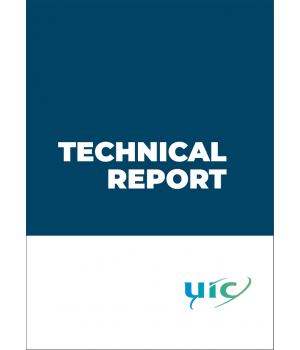
Influence of head and tail wind on the braking distance of trains and single vehicles
Speed and direction of the wind influences the train’s longitudinal running resistance (resistance to forward movement). Also the train stopping distance during a brake application is influenced by the presence of wind.
A model to estimate the influence of wind speed on stopping distances for different types of rolling stock is presented in the case of pure head or tail wind condition.
Due to the limited validity of the model used, the behaviour of different types of rolling stock is compared under these two sets of wind conditions only (yaw angle equal to 0° and 180°), although ERRI wind tunnel tests (see ERRI report A168 RP3) demonstrate that drag is not at maximum under these wind conditions and these conditions therefore do not represent the worst-case scenario.
"+ "
| ISBN | 978-2-7461-2023-5 |
| Pages | 36 |
Data sheet
- Language
- English
- Edition
- Ed. no.1
- Edition date
- 01/12/2011
- Publication date
- 20/04/2012
- Page number
- 36
- Theme
- Technology Standardisation Technique Standardisation
- sku
- E_DT422
- Reference
- B 126 / DT 422
 Cookie preferences
Cookie preferences

